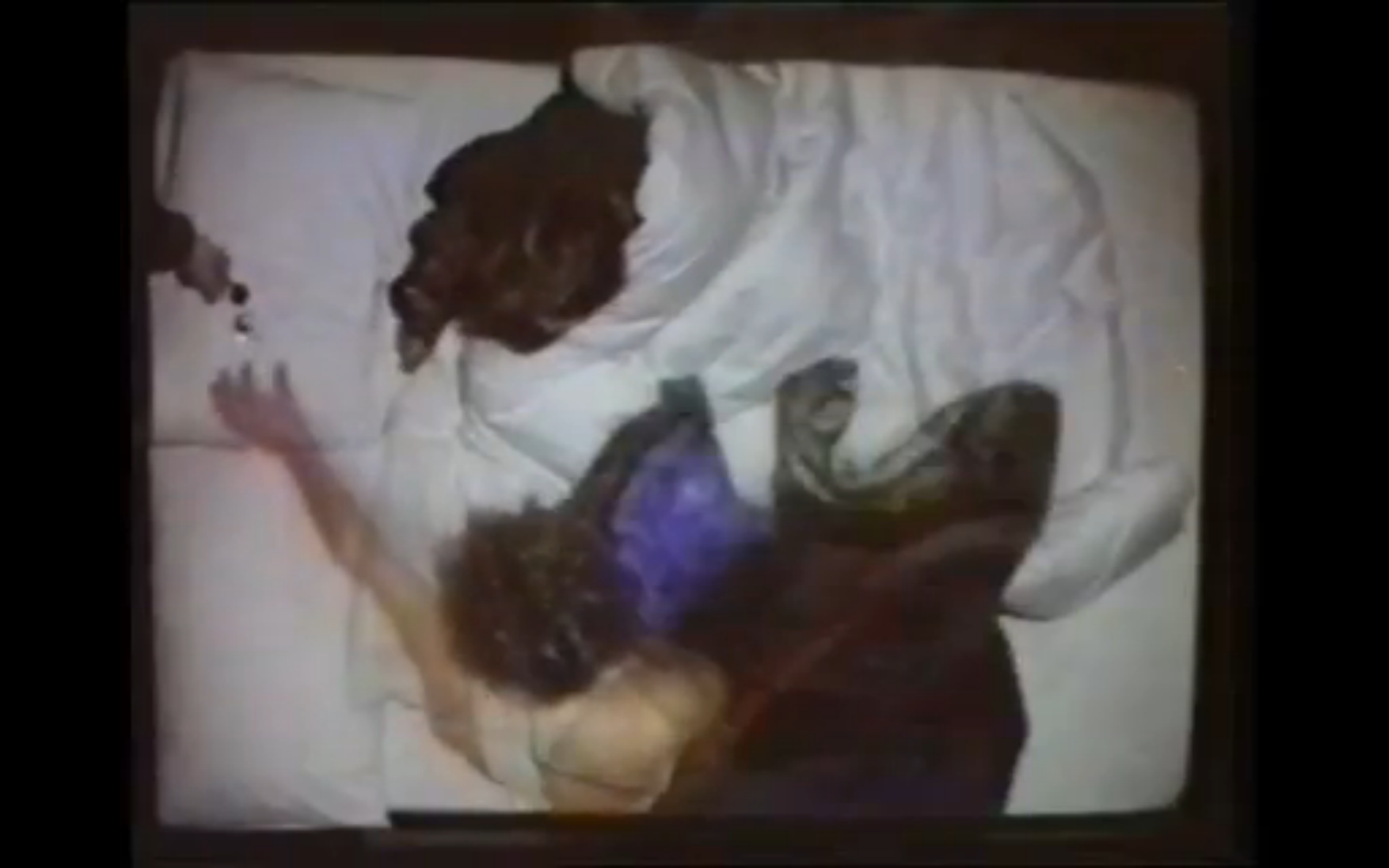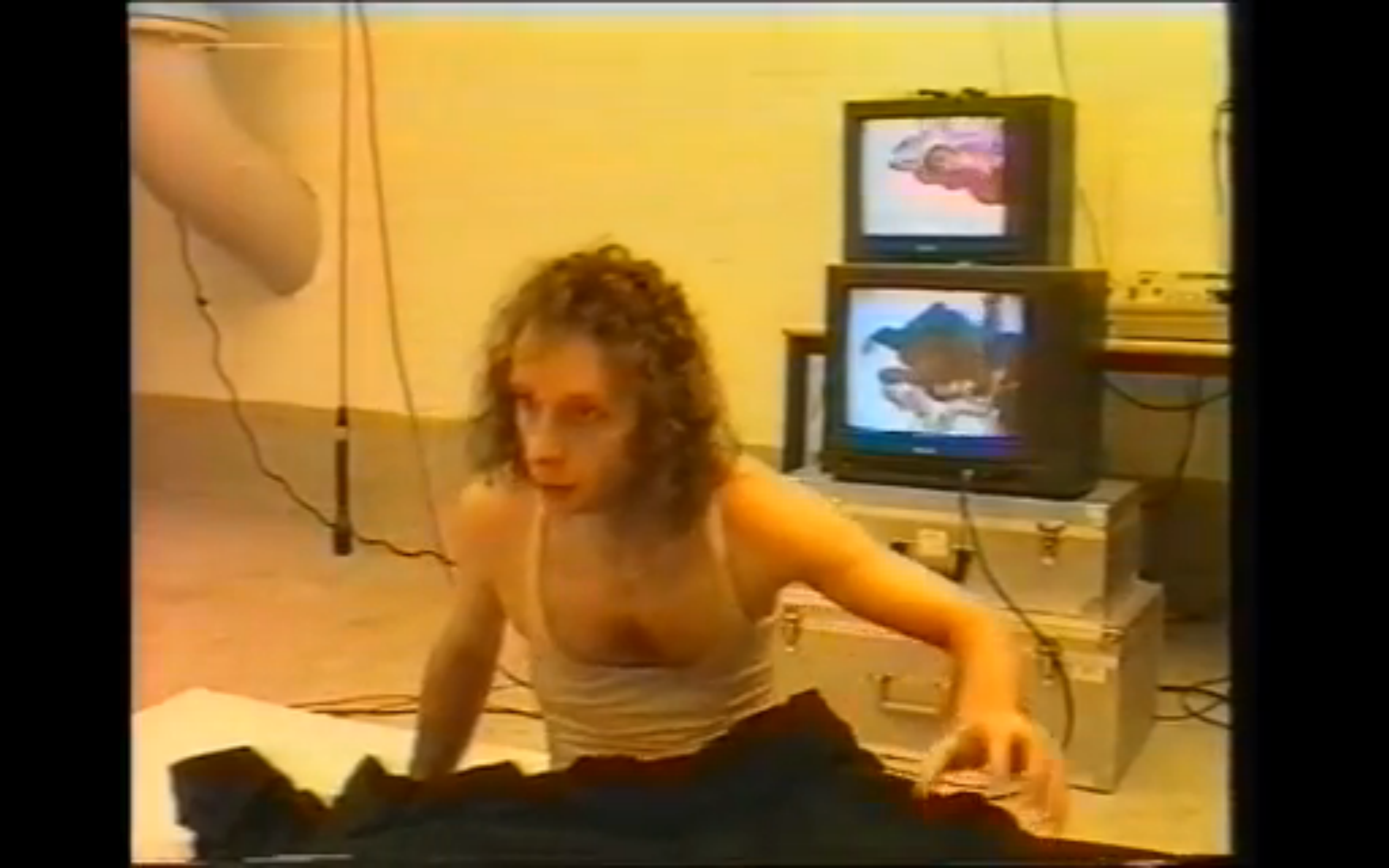A Brief Description
Paul Sermon‘s Telematic Dreaming (1992) is an interactive video installation connecting two separate locations via ISDN video conferencing. A double bed is set up in both spaces for participants to lie on and interact with each other remotely through video projection, cameras and monitors.


A New Reality and Way of Seeing
The work goes beyond bridging the local and remote, creating a new reality in the third space. Participants are only together in this third space, visible in the monitor or telepresent projected image. Although video-calling is now ubiquitous, Sermon’s work is groundbreaking for its time. It presents the co-creation of narrative and experience through remote interaction in a third space, which has become an integral aspect of today’s Internet.
“And from this ubiquitous state of shared presence we have come to inhabit an entirely new way of seeing via a fracturing of perception.” — Randall Packer, “The Third Space” (2014)
Similarly, Telematic Dreaming alters perception and reality through sensory replacement. As participants lie on the bed and encounter each other as telepresent images, the seeing eye replaces the feeling hand. The third space rejects conventional ideas of time and space, and engenders new modes of navigation, creating a synesthetic experience.
Allowances of the Third Space
The double bed has psychological and cultural associations as an intimate, private space. Sermon subverts this by bringing together strangers who readily share this space and test the limits of this new reality and relationship. Their interactions suggest that people are open to intimacy in the third space and even boldly seek it, perhaps because it is “a space of invention and possibility… where participants might assume their avatar identities”.[i]
Although the third space has become our reality and can bridge vast cultural and geographical chasms, it nonetheless begs the question: Is it enough? The common expression ‘the human touch’ typically refers to some intangible quality of care and emotion. However, could it be as simple as warm, damp, physical contact?
References
[i] Packer R. “The Third Space,” (2014) in Reportage from the Aesthetic Edge

Excellent. I really like this comment: “the seeing eye replaces the feeling hand,” which I think suggests that the experienced intimacy in the third space is a psychological trigger, an imagined sensation. You are so right, we should be questioning as to whether this is enough, to touch and engage in the third space. For many, it has become a replacement for RL, and I believe works like Telematic Dreaming and The Big Kiss are a critique on our emerging third space reliance. Lots to discuss!!
Nicely put. I’m pretty curious about the added graphics – won’t they distract the users from the quiet connection formed between them, or would it make the space less intimidating to connect with a stranger?
I understand that from video documentation of Telematic Dreaming that the graphics evoked the dream-like state associated with sleep.
In silent versions of Telematic Dreaming, Sermon (2004) refers the quiet connection you mentioned.
Margaret Morse (1993) emphasizes this process of mime and mimicry in her analysis:
Speechlessness compels the participant to become a visual interlocuter robbed of vocal or verbal dominance.
References
Normal
0
MicrosoftInternetExplorer4
st1\:*{behavior:url(#ieooui) }
/* Style Definitions */
table.MsoNormalTable
{mso-style-name:”Table Normal”;
mso-tstyle-rowband-size:0;
mso-tstyle-colband-size:0;
mso-style-noshow:yes;
mso-style-parent:””;
mso-padding-alt:0in 5.4pt 0in 5.4pt;
mso-para-margin:0in;
mso-para-margin-bottom:.0001pt;
mso-pagination:widow-orphan;
font-size:10.0pt;
font-family:”Times New Roman”;}
Morse, M. (1993). Paul Sermon By Margaret Morse. Retrieved 12 February 2017, from http://www.hgb-leipzig.de/~sermon/ess_2.html
Sermon, P. (2004). Performer determined narratives in telematic environments. In A. Zapp (Ed.), Networked narrative environments as imaginary spaces of being (pp. 82-98). Manchester: Manchester Metropolitan University.
There were many different versions of the piece, generally though there aren’t any added graphics, such the two participants interacting with one another. You’re right, that’s really the focus.